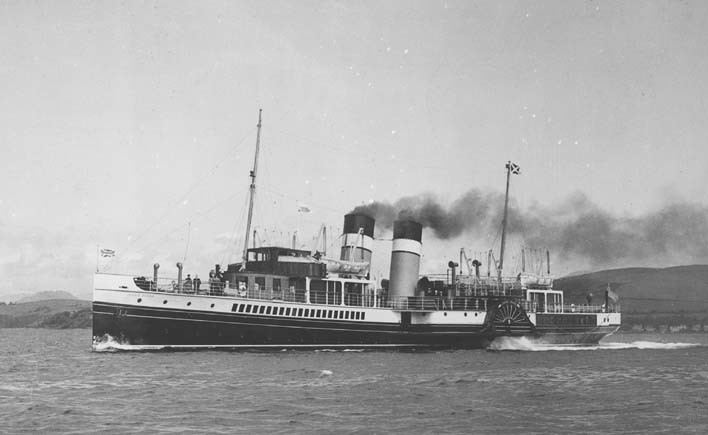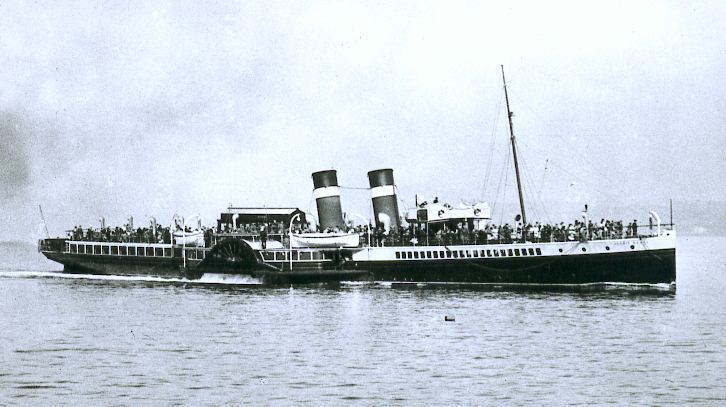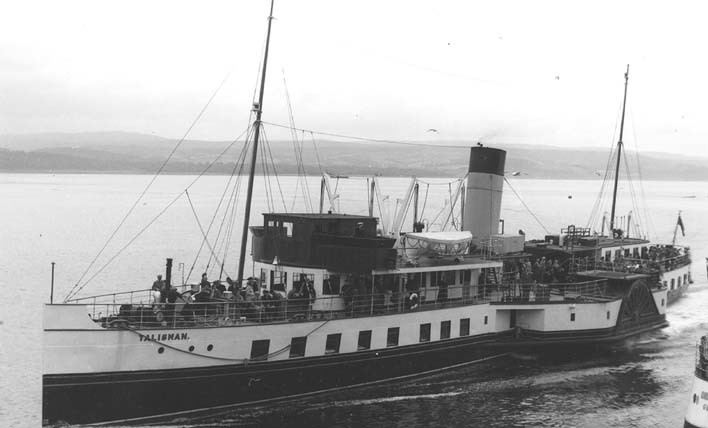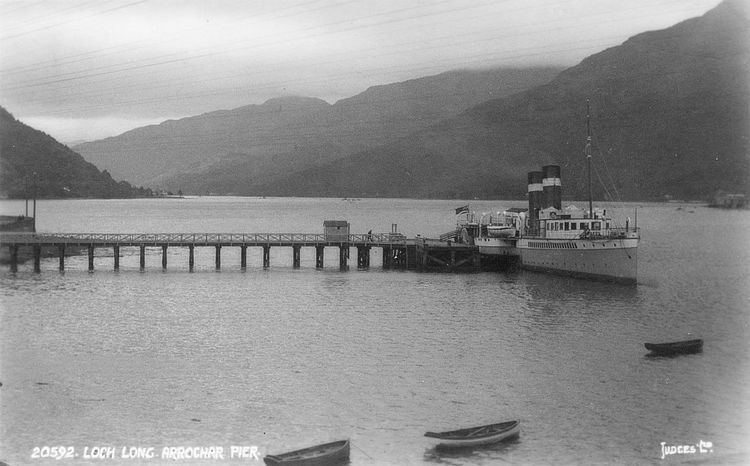Name PS Jeanie Deans Yard number 644 Launched 7 April 1931 | Cost £52,650 In service 1931 Length 76 m | |
 | ||
Owner 1931- 47 London and North Eastern Railway1948-51 British Transport Commission1951-65 Caledonian Steam Packet Company1965-68 Coastal Steam Packet Co Ltd, London | ||
PS Jeanie Deans was a Clyde paddle steamer, built in 1931 for the London and North Eastern Railway. She was a popular boat, providing summer cruises from Craigendoran until 1964.
Contents

History

PS Jeanie Deans was built for the London and North Eastern Railway in 1931 to compete with the CSP turbine steamer, Duchess of Montrose. She was built by the Fairfield Shipbuilding and Engineering Company, Govan, as a paddler, rather than the more popular turbine steamer, allowing her a shallow draught to visit Craigendoran and Helensburgh. She took the name of an earlier fleet member, continuing the tradition of the North British Railway naming their vessels after characters from Sir Walter Scott's novels.
Jeanie Deans (1884)

An earlier Clyde steamer of the same name was built by Barclay Curle & Co in 1884 for the North British Steam Packet Co. She operated out of Craigendoran until 1896, when she was sold for service on Lough Foyle. Returning to the Clyde in 1899, as Duchess of York she ran cruises from Glasgow, becoming Isle of Cumbrae in 1904 and serving Rothesay. From 1916, she was chartered to the Glasgow and South Western Railway and operated between Princes Pier and Dunoon. She did not return to peace time service and was broken up at Dumbarton in 1920.
Layout

Jeanie Deans was the first Clyde steamer with a three-crank engine, giving her an impressive speed of 18.5 knot in trials. As built, she had two small deckhouses, one forward, supporting the open bridge and one aft of the twin funnels, covering the companionway. After her first season, a large first class observation saloon was built forward on the promenade deck, providing welcome shelter during poor weather. Her funnels were lengthened to reduce the cinders deposited on passengers.

After war service, she was extensively refitted, including a new deckhouse, increasing tonnage to 814. During the winter of 1956/7, she was converted to oil and she had Radar fitted in 1960.
Service

Jeanie Deans was built for summer cruising from Craigendoran. In 1931, she took up the company's flagship Lochgoilhead and Arrochar service. On Sundays, she provided cruises down the Firth. These lower Firth cruises were extended from the 1932 season, visiting Ayr and offering cruises around Ailsa Craig and bringing her into direct contact with the Duchess of Hamilton.
By the outbreak of war, she was the longest and fastest paddle steamer on the Firth. She was requisitioned by the government and saw war service as a minesweeper and then as an anti aircraft vessel on the River Thames. Returning to her peacetime duties, she launched the popular Round Bute cruise in the 1950s.
Jeanie Deans was withdrawn after the 1964 season and sold for further cruising on the River Thames. As Queen of the South, she operated for the Coastal Steam Packet Company until 1967, but technical problems made the new venture a failure. In December 1967, she left the Thames for breaking up at Antwerp, Belgium.
